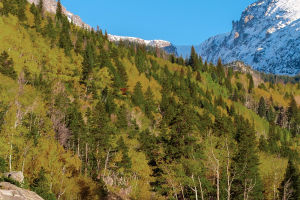The Everest Pan-Mountain Highway, located in the Tibet Autonomous Region in southwest China, connects the South Asian plateau and the semi-arid plateau.
The highway is part of China's highway system, with a total length of about 108 kilometers, and is one of the important routes connecting the city of Shigatse in the Tibet Autonomous Region with the Everest region.
The Everest Pan-Mountain Highway is known as one of the most beautiful highways in the world because of its good road condition, width, smoothness, and spectacular scenery along the way.
The construction of the highway began in the 1950s when it was built to facilitate access to the Tibetan region. Later, as more and more people traveled to the Everest region to climb mountains, the Everest Pan Mountain Highway became one of the main transportation routes to the Everest region.
The Everest Pan Mountain Highway starts from Shigatse City, passes through five counties, including Saga County, Tingri County, Lhazhi County, Nyalam County, and Kangma County, and ends at the Everest Base Camp. The entire highway crosses the Himalayas with altitudes ranging from 3600 meters to 5200 meters. The zigzag shape of the road and the precipitous peaks give people a strong visual impact and attract many tourists.
In addition to the beautiful natural scenery, the Everest Pan Mountain Highway also has a long history and culture.
Moreover, there are many towns and villages related to the life of Tibetan people near the highway, allowing visitors to immerse themselves in local communities and learn about the life and culture of the local people.
Of course, there is an entrance fee to the Everest region, but every frame of the scenery during the drive on the highway is worth every penny.
Additionally, certain weather and seasons enhance the beauty of the highway. For example, in spring, the road is in full bloom with flowers, creating a bright and dazzling spectacle. In autumn, when the leaves turn yellow, the mountains and forests resemble a tapestry.
If you wish to experience the entire tour, it is recommended to plan a trip of about three days to fully enjoy the journey. The best times to travel are during suitable seasons, such as from May to early June and from late October to mid-November.
However, before embarking on the Everest Pan-Mountain Highway, there are a few points to consider:
The high altitude and low oxygen content in Tibetan areas can affect your health. If tourists are not acclimated to the geographical environment of the region before going to Tibet, they may experience altitude sickness, such as headaches, difficulty breathing, and chest tightness. To avoid altitude sickness symptoms, it is advisable to take altitude sickness medication in advance.
Tourists should make adequate preparations before traveling on the Everest Pan-Mountain Highway. At high altitudes, the weather is unpredictable, and sudden rain or snow can occur, which may impact your travel experience. Therefore, it is important to be aware of the local weather conditions in advance, choose suitable clothing and equipment, and ensure your safety and comfort.
During the tour of the Everest Pan-Mountain Highway, it is essential to be mindful of not littering and to keep the natural environment clean and tidy. Respect for the local culture and customs is also important, maintaining good tourism quality and etiquette.
The Everest Pan-Mountain Highway is one of the most magnificent highways in China and the world, offering diverse and fascinating landscapes along its route.
If you are interested, it is worth visiting this beautiful land of Tibet and taking the Everest Pan-Mountain Highway to experience the surprises and awe-inspiring wonders nature has to offer.


